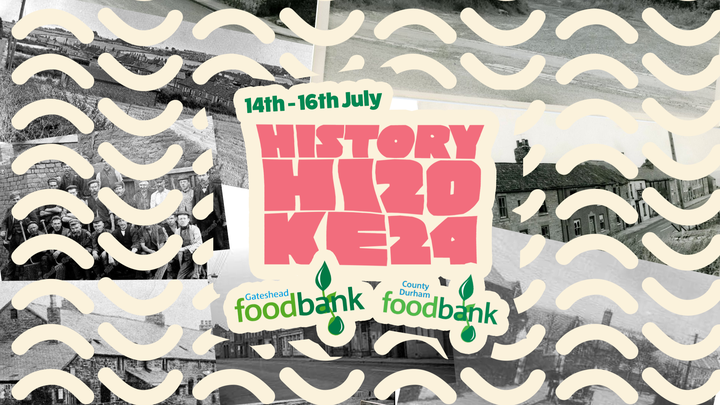
NEHL's History Hike 2024 - Durham's Category D Villages
Donation protected
Over the past two years, we've managed to raise £2000 for brilliant causes, for both Macmillan Cancer Research and the North East Autism Society. Considering we're a little local history project, I'd say that's pretty good going!
This year we're doing something a little different. I've walked to Newcastle and Alnwick, then Hexham to Hartlepool. This year, we're passing through as many Category D Villages as possible in 3 days, all in aid of the County Durham and Gateshead Food Banks. The funds will be split 50/50.
Category D Villages were settlements which sat at the bottom of the pile in the county's strategic planning and deemed not worthy of future investment. They were pit villages and old rural outposts without sanitation, electricity and running water in many cases. They were deemed as unfit for habitation, so instead of rebuilding and renovating residents were encouraged to move to other areas through natural decline of these settlements. This started in 1951, with the plan stating:
From the 1951 Durham County Council Development Plan itself:
“All settlements in the county have been placed in one of four categories: … D. Those from which a considerable loss of population may be expected. In these cases it is felt that there should be no further investment of capital on any considerable scale, and that any proposal to invest capital should be carefully examined. This generally means that when the existing houses become uninhabitable they should be replaced elsewhere, and that any expenditure on facilities and services in these communities which would involve public money should be limited to conform to what appears to be the possible future life of existing property in the community. … There is no proposal to demolish any village, nor is there a policy against genuine village life. It is proposed to remould gradually the pattern of development in the interests of the county as a whole.” (Text courtesy of Matt James Smith, on his excellent site on the topic https://mattjamessmith.com/blog/the-category-d-villages-of-durham)
There were 121 in total across the county. The result of the policy in each area differs. Some survived and continued as normal since the rescinding of the programme, some declined, some redeveloped and some have been wiped off the map.
Given the current economic climate and issues facing many communities in Durham and Gateshead, I feel it is most apt to fundraise for the foodbanks in recognition and celebration of these communities. They live in through the memories of former residents and those with a vested interest. Their settlements changed the landscape of Durham, and I'm so excited to share their stories. Also, this whole walk won't just be a gripe at government and the politicking of people's lives. I hope , in my own silly little way, to provide a little insight into the lives and social fabric of these *actually* forgotten places.
I'll be walking around 20 miles every day for 3 days sharing the full walk on Twitter with my drone and camera, similar to my other walks through the year. We'll be starting at Newburn, making our way south through Stanley, then Durham and Bishop Auckland and finishing at Spennymoor. I'm so excited to share them with you, and i'd be honoured if you can support me in fundraising for a critical cause.
Organizer
Kieran Carter
Organizer